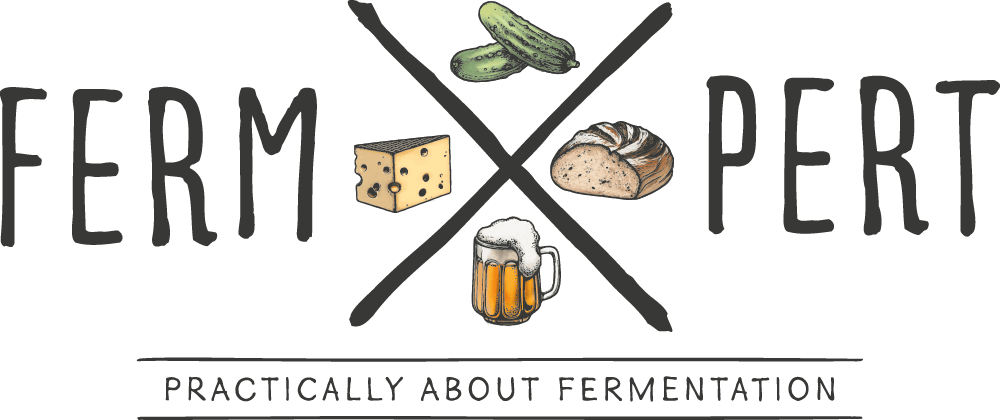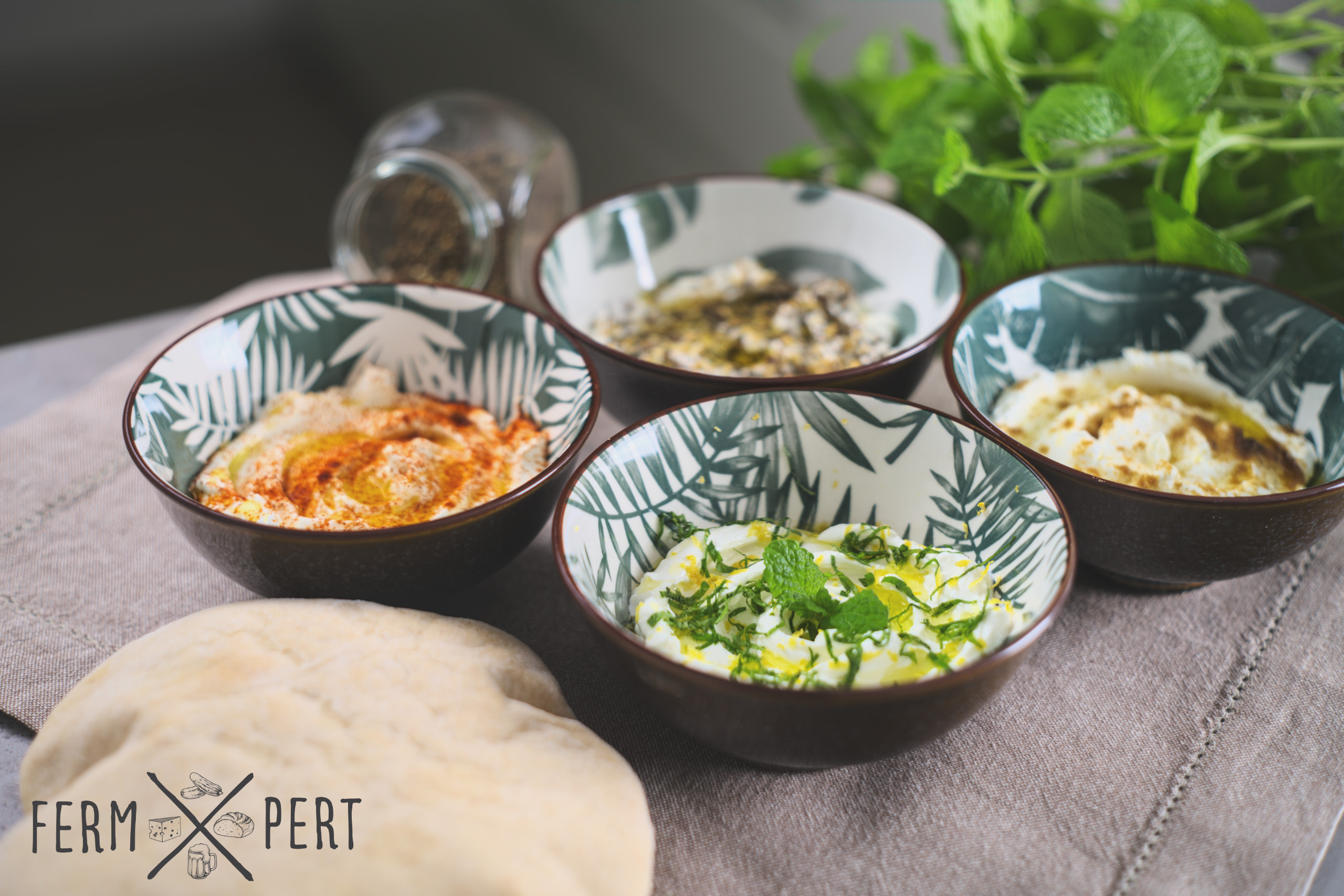Yoghurt is one of the dairy products that I make constantly. Not only is it delicious, but it is also versatile and can be used in dishes from many different parts of the world. Today I’m visiting the Middle East with my labneh recipe.
Labneh is a thick and creamy yoghurt cheese that’s popular in Mediterranean and Middle Eastern cuisine. Made by straining yoghurt until it’s thick and spreadable, labneh has a tangy and slightly salty flavour that’s perfect for spreading on bread or crackers, dolloping on salads, or using as a dip for vegetables. It’s easy to make with just a few ingredients and can be customised with a variety of herbs and spices for endless flavour combinations.
Recipe
The ingredient amounts given below produce around 2 servings of labneh. Due to the time needed to make it, I strongly suggest making twice as much in a single go.
Ingredients
- 1 L pateurised milk
- 5-10 g salt
- a source of yoghurt bacteria:
- 1 tbsp yoghurt containing live bacteria cultures, or
- dry frozen yoghurt bacteria cultures (dosage according to the producer’s indications)
Method
Inoculate the milk with yoghurt bacteria and store at 40°C (104°F) for 8-12 hours until the milk thickens. At this stage, the milk has become yoghurt.
Mix the salt into the yoghurt, then pour it into a strainer lined with a cheesecloth, a muslin cloth, a clean flat cotton nappy or a clean tea towel. After around an hour, enough whey should have strained to safely put a weight on top of the yoghurt. After 12 hours of straining, the labneh is ready and can be transferred to the fridge.
Serve with bread as a dip or a spread. Optionally, the juice of half a lemon can be mixed in. The top is typically sprinkled with herbs or spices and drizzled with extra virgin olive oil.
Additional Information
It’s possible to make labneh from store bought yoghurt. It’s enough to buy a 1 litre container of yoghurt, add salt and strain it.
The amount of salt should be around 1-2% of the obtained labneh mass. Assuming that the milk will reduce its weight by half after straining, 5-10 grams of salt is perfect per litre of milk. When using store bought yoghurt, the salt amount remains the same unless it’s Greek yoghurt. In such a case, since Greek yoghurt has some of its whey already strained, the amount of salt needed can be raised by around half, to 7.5-15 grams per litre.
Labneh can be served with various herbs and spices. I recommend the following options (they aren’t a complete list by any means):
- chopped fresh mint leaves and fresh lemon zest
- chopped fresh dill
- ground cumin
- paprika (sweet or spicy)
- za’atar
- sumac
- sesame seeds
- harissa
Video Transcription
Here’s a dish I find interesting: labneh. Technically it’s just a very thick yoghurt, up to the point of becoming a spread. But it’s so delicious, it deserves some attention. The full recipe can be found on the blog.
In order to make labneh, I need to turn milk into yoghurt. There’s a separate video dedicated to yoghurt so I’ll just outline the key steps. I inoculate milk with yoghurt bacteria. I let it ferment overnight at 40°C (104°F). And there’s my yoghurt. By the way, everything up to this point can be skipped by using store-bought yoghurt, preferably Greek.
Before I proceed to strain the yoghurt, I mix salt into it. Then, it goes into a flat cotton nappy. A cheesecloth or even a clean tea towel work just as well. Within an hour, a decent amount of whey collects in the pot under the strainer. This is when I put a weight on top in order to press more whey out of my labneh. It will take some time to reach the intended consistency. I usually let it strain for at least 8 hours.
My labneh is ready to go into the fridge. It will become even thicker when it cools down.
When serving, I often mix my labneh with a bit of lemon juice to add some extra sourness. This is optional though. I like to serve it in a bowl, with a drizzle of olive oil, a sprinkle of chopped herbs or spices and a piece of pita bread.
It’s delicious. The labneh itself is rather sour, which is to be expected from strained yoghurt. There’s just a hint of saltiness which mostly just boosts the other flavours. The additional ingredients add complexity. It’s simply delicious!

